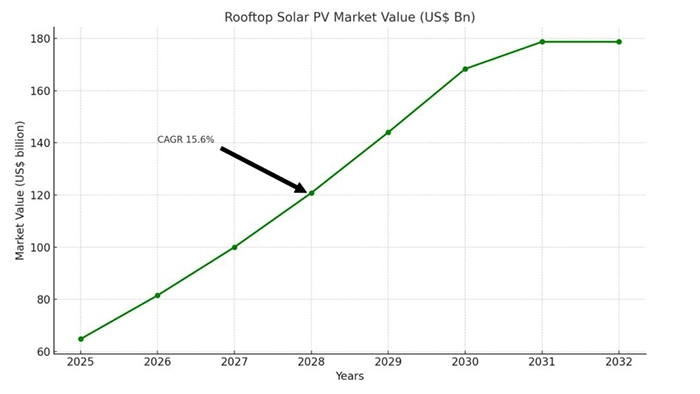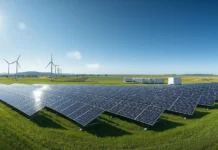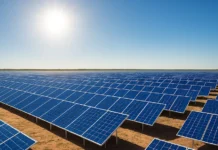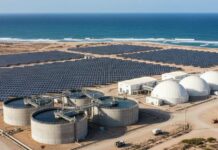The global Rooftop Solar PV Market is undergoing a transformative period as the adoption of renewable energy technologies accelerates. Driven by declining installation costs, supportive government policies, and growing environmental consciousness, rooftop solar systems are becoming an increasingly attractive energy solution for residential, commercial, and industrial users. According to market research, the market is expected to reach US$64.8 billion in 2025 and expand to US$178.7 billion by 2032, representing a robust CAGR of 15.6% over the forecast period. This surge reflects the broader global shift toward clean energy, decentralization of power generation, and efforts to reduce carbon footprints across sectors.

Rooftop solar PV systems are gaining traction worldwide due to their ability to convert sunlight directly into electricity efficiently and sustainably. Governments across various regions are implementing favorable regulatory frameworks, offering tax incentives, and promoting net metering policies to accelerate adoption. Residential, commercial, and industrial sectors are increasingly deploying rooftop solar installations to reduce electricity costs and support corporate sustainability objectives. Technological advancements, such as the integration of smart inverters, AI-based monitoring systems, and battery storage solutions, are further enhancing system efficiency and reliability, making rooftop solar a practical and attractive energy solution.
Key Market Drivers
Several factors are driving the expansion of the Rooftop Solar PV Market. A primary driver is the declining cost of solar modules and related components, fueled by advances in photovoltaic technology, particularly crystalline silicon and thin-film technologies. These improvements have increased module efficiency while reducing the cost per watt of electricity generated, making rooftop systems more appealing to both residential and commercial users. Government incentives, including subsidies, tax rebates, and low-interest financing, are also promoting market growth. Additionally, net metering schemes, which allow consumers to sell excess electricity back to the grid, improve financial returns and make rooftop systems more economically viable.
The global transition toward renewable energy is another critical driver. Countries worldwide are setting ambitious solar energy targets, with rooftop solar systems playing a key role in achieving decentralized energy production and reducing dependence on centralized, fossil-fuel-based grids. Rising electricity prices from conventional sources further enhance the economic rationale for adopting rooftop PV systems. Corporate sustainability initiatives are also prompting commercial and industrial players to invest in rooftop installations as part of their carbon reduction strategies, creating additional growth momentum.
Market Challenges
Despite strong growth potential, the Rooftop Solar PV Market faces several challenges. High initial installation costs remain a barrier for many potential users, while space limitations in urban areas restrict system deployment. The intermittent nature of solar energy, combined with inadequate energy storage or grid integration infrastructure, can reduce efficiency and reliability. Complex permitting processes, limited financing options, and shortages of skilled labor for installation and maintenance in developing markets further constrain adoption.
However, ongoing technological innovation, decreasing equipment costs, and the growing presence of third-party solar service providers are expected to mitigate these challenges over time. Battery energy storage systems (BESS) are becoming increasingly important in addressing intermittency, allowing for better energy management and enhanced grid stability.
Opportunities and Growth Prospects
The Rooftop Solar PV Market presents significant opportunities for growth in both developed and emerging economies. Integration with battery storage systems, AI-based monitoring, and digital energy management is enabling more reliable and optimized rooftop solar installations. Financial innovations such as solar leasing, power purchase agreements (PPAs), and community solar models are expanding access for residential and commercial users, reducing upfront capital requirements. The growing demand for sustainable energy solutions among corporate and industrial consumers is also driving large-scale rooftop adoption. These factors collectively indicate a strong growth trajectory for the Rooftop Solar PV Market through 2032.
Technological advancements continue to redefine market dynamics. High-efficiency crystalline silicon modules maintain a dominant share due to reliability and energy output, while thin-film modules are rapidly gaining popularity for their lightweight and flexible design. Smart inverters, AI-powered monitoring systems, and energy storage integration are becoming essential components, enabling optimized performance and reliability. Companies that can offer end-to-end solutions, including installation, financing, and technology integration, are likely to capture greater market share.
Regional Insights

North America continues to stand out as a major hub for rooftop solar PV installations, with the United States leading regional growth. Federal and state-level incentives remain instrumental in promoting adoption, while expanding residential and commercial deployments supported by flexible and innovative financing models are accelerating market penetration across the region.
In Europe, the market reflects a high level of maturity, shaped by stringent environmental regulations, elevated electricity costs, and long-standing governmental backing for renewable energy. Nations such as Germany, the United Kingdom, and Italy remain frontrunners in integrating rooftop solar systems as part of their broader clean energy transition efforts.
East Asia, driven primarily by China and Japan, retains a dominant position in the global Rooftop Solar PV Market. The region’s leadership is underpinned by large-scale manufacturing capabilities, supportive policy frameworks, and ongoing technological advancements. Meanwhile, South Asia and Oceania are emerging as dynamic high-growth zones, led by India and Australia. India’s Rooftop Solar Programme Phase II and Australia’s extensive household solar incentive schemes are propelling widespread installations across urban and rural landscapes alike.
Latin America and the Middle East & Africa are also gaining traction in rooftop solar PV adoption. Both regions benefit from abundant solar resources and government initiatives focused on diversifying national energy portfolios. The Middle East, in particular, is actively pivoting away from fossil fuel dependence toward solar power, signaling a strategic shift toward long-term sustainability and energy resilience.
Conclusion
The Rooftop Solar PV Market is poised for substantial growth, rising from US$64.8 billion in 2025 to US$178.7 billion by 2032 at a CAGR of 15.6%. Declining installation costs, government incentives, and technological integration are accelerating adoption across residential, commercial, and industrial sectors. Battery storage, AI-based monitoring, and digital energy management are enhancing reliability and optimizing system performance. As the market evolves, rooftop solar is emerging as a mainstream renewable energy solution, providing sustainable energy, cost savings, and resilience to both consumers and businesses worldwide.
Looking ahead, expanding financing models and supportive grid policies are expected to further strengthen rooftop solar deployment globally. As utilities embrace distributed generation and consumers seek greater energy independence, the integration of smart grids and storage systems will define the next phase of growth. This evolution positions rooftop solar as not just an alternative energy choice but a central pillar of the future energy landscape.








































